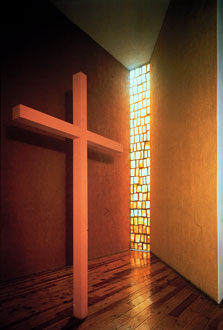minimalism is poetry, part two
When I first thought of doing this post, my intention was to explore minimalism in architecture and how it differentiates depending on its cultural geography. However, that might take longer than I have the attention span for. That said, my focus is on Japanese aesthetics for its stark melody of gray and white compositional forms. The way we interpret a lot of modern concepts and ways of living is to strip it down to a form we know as “Zen”, or Japanese and Zen-like replications of what it means to live with this beautiful simplicity. I can’t help but think of the stark contrast of form and shadows. In fact, my favorite aspect is in the way that walls seem to come alive, and change throughout the day. When our surroundings are stripped bare and we have arrived at the minimal basics, [light, shelter, air] we start to play with our sense of space. If done well, it can really create artistic splendor.

 Akira Sakamoto. Hakuei Residence, Osaka
Akira Sakamoto. Hakuei Residence, Osaka
 Akira Sakamoto. Hakuseto Dental Clinic, Toyama
Akira Sakamoto. Hakuseto Dental Clinic, Toyama
Space in Japan is limited in the big cities, and with the constant visual feed coming at you, it can cause the most enthusiastic metropolitan-minded individual to crave a calm, and serene place of respite. The desire to fall upon a scheme void of much color might be telling to the overload of visual stimulation. But what were to happen if we visit another area of the world, with great expanse of open space, and get away from the starkness of gray and white concrete? The context of color changes completely.
 Luis Bárragán. Capilla de Tlalpan, Mexico City.
Luis Bárragán. Capilla de Tlalpan, Mexico City.
Luis Bárragán Morfin is one of my favorite 20th Century Mexican architects. He worked with all the minimalist principles, but was inspired by the sound and color from the world around. To read him is quite fascinating, and I will use one quote to sum up his inspiration for the works shown above, “Architecture, besides being spatial, is also musical. That music is played with water. The importance of walls is that they isolate one from the street’s exterior space. The street is aggressive, even hostile: walls create silence. From that silence you can play with water as music. Afterwards, that music surrounds us.”
Related
~ by luxe. on October 17, 2009.
Posted in Opinion
Tags: akira sakamoto, luis bárragán, minimalism



Wow! What a beautiful compilation of images and ideas. I look forward to following this!
An aesthetically pleasing blog, Erika. I expected nothing less.